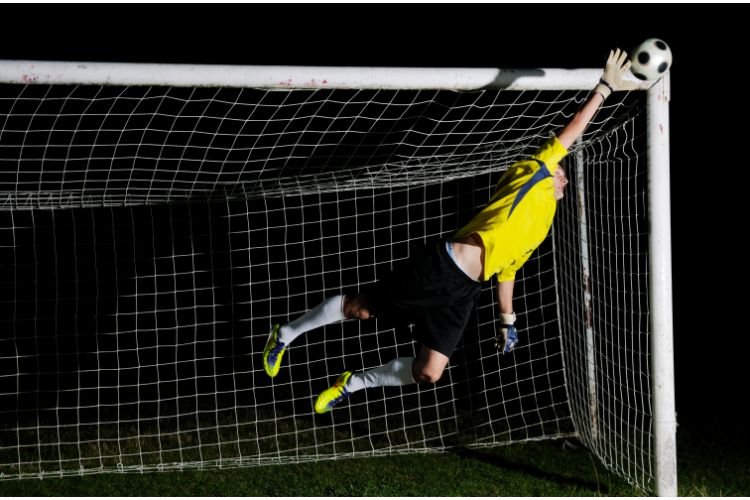Mastering the art of goalkeeper positioning during penalty kicks is crucial for any aspiring soccer goalie. It’s not just about guessing where the ball will go; it’s about understanding the shooter’s psychology, positioning yourself effectively, and making the save that can turn the tide of the game. How does a goalkeeper stand their ground in these high-pressure moments? Let’s dive into the strategies that can help goalkeepers increase their chances of making that crucial save.
Understanding Penalty Kicks
Before we explore goalkeeper positioning, it’s essential to understand what a penalty kick entails. A penalty kick occurs when a foul punishable by a direct free kick is committed by a player in their own penalty area. The ball is placed on the penalty spot, 12 yards from the goal, with only the goalkeeper to beat. This scenario is as thrilling as it is challenging, both for the shooter and the goalkeeper.
The Psychology Behind Penalty Kicks
Penalty kicks are as much about psychology as they are about skill. For goalkeepers, reading the shooter’s body language and cues becomes a game of high stakes. Does the shooter favor their right or left foot? Do they telegraph their intentions through their run-up angle? Understanding these nuances can give goalkeepers the upper hand.
Positioning Basics
Effective positioning is the foundation of a successful penalty save. Goalkeepers should stand in the center of the goal line, maintaining a stance that allows for quick lateral movement. This balance is critical for reacting swiftly in any direction. Let’s break down the key aspects of optimal positioning:
- Foot placement: Keep feet shoulder-width apart for stability and agility.
- Body weight: Slightly forward to enable immediate movement.
- Hand positioning: Hands ready and slightly forward, preparing to dive.
Advanced Techniques and Strategies
Beyond the basics, several advanced techniques can enhance a goalkeeper’s chances of saving a penalty. These include:
- Studying opponents’ penalty history to anticipate their preferred shooting side.
- Using psychological tactics, like standing off-center, to encourage the shooter to aim for the larger visible area of the goal.
- Timing the dive – committing too early can give away the save, while too late can mean missing the ball entirely.
Training and Preparation
Preparation is key to mastering penalty kick saves. Goalkeepers should focus on both physical and mental training. Physically, enhancing reflexes, agility, and explosive power is vital. Mentally, goalkeepers must work on their ability to remain calm under pressure and to read the game effectively. Simulation drills, where goalkeepers face penalty kicks in a training environment, can be incredibly beneficial.
Helpful Hint:
Practicing with a variety of shooters during training sessions can help goalkeepers prepare for different penalty styles and speeds, making them more versatile in real-game situations.
Case Studies of Successful Penalty Saves
Examining case studies of famous penalty saves can provide valuable insights. For example, studying the 2006 World Cup final shootout or the Champions League final saves offers lessons in positioning, decision-making, and psychological warfare between the goalkeeper and the penalty taker.
Understanding Shooter Tendencies
An integral part of a goalkeeper’s preparation for penalty kicks involves understanding shooter tendencies. This includes analyzing patterns in how players approach the ball, their body language, and their preferred shooting direction. Goalkeepers can gain insights through video analysis, focusing on the moments right before the shot is taken. Recognizing these patterns can significantly improve anticipation and reaction times.
Stats:
Studies reveal that top-level goalkeepers have a penalty save rate of approximately 20-30%. This highlights the importance of thorough preparation and psychological tactics in increasing save percentages.
The Role of Psychology in Goalkeeping
Psychology plays a pivotal role in the dynamics of a penalty kick. Goalkeepers can use various strategies to increase the pressure on the shooter. For instance, making eye contact, taking up more space by standing tall, or even engaging in small talk to disrupt the shooter’s focus. These tactics can make the difference, creating a moment of doubt in the shooter’s mind.
Physical Conditioning and Reflex Training
Physical conditioning and reflex training are cornerstone elements for any goalkeeper. Agility drills, reaction time exercises, and strength training form the core of a goalkeeper’s physical preparation. Incorporating activities like plyometrics and sprint drills improves explosive power, crucial for quick dives and reaching far corners of the goal.
Helpful Hint:
Incorporate exercises that mimic the movements of diving for a save in your training regimen. This specificity helps in enhancing muscle memory and reaction times during penalty situations.
Simulation Training for Real-Game Scenarios
Simulation training is another effective method to prepare for penalty kicks. By recreating the pressure and intensity of a penalty shootout, goalkeepers can acclimate to the high-stakes environment. Training should include various penalty takers, differing run-up techniques, and placement variations to cover as many scenarios as possible.
Communication and Team Dynamics
Communication between the goalkeeper and their team is essential, especially during penalty situations. A goalkeeper’s confidence can uplift the team’s morale, while insights shared about a penalty taker’s tendencies can be crucial for strategizing. The bond between a goalkeeper and their defenders is fundamental in creating a cohesive defensive unit.
Adapting to the Game’s Evolution
Soccer is an ever-evolving sport, and so are the strategies surrounding penalty kicks. Goalkeepers must stay abreast of new trends, techniques, and rule changes that can affect penalty kick dynamics. Continuous learning and adaptability are key traits for modern goalkeepers aiming to excel in their role.
FAQs
Additional Resources
- Goalkeeping.com: A dedicated site for goalkeepers, offering articles, training drills, and tips from professional coaches. A must-visit for goalkeepers looking to improve their penalty kick strategies.
- Psychology of Sport: Delve into the psychological aspects of sports, including how goalkeepers can improve their mental game, particularly during penalty situations.

